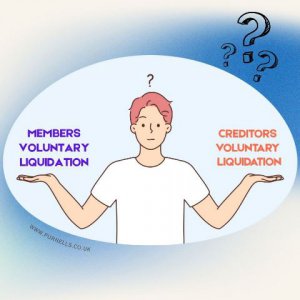Looking to cease trading?
Options to cease trading, whether solvent or insolvent
Cease to Trade a Solvent Business or Limited Company
If you are a sole trader and your business is solvent, you can of course simply close out your supplier accounts and settle your remaining debts. There are no formal procedures for ceasing a sole trader business, simply settle your accounts and notify HMRC that the business is no longer operational on your final self assessment tax return.
If you are looking to cease trading a solvent limited company, there are two main options:
Dissolution / Striking Off
If the Company has no debts, final accounts have been prepared and submitted, and HMRC have been notified, then you can file a DS01 form with Companies House, who will then look to dissolve the company. That application can only be submitted once the company has ceased to trade for three months. If the residual balance to be returned to the shareholders is less than £25,000, then Extra Statutory Concession Number 16 maybe applicable, and further information can be found by clicking on the above link.
Members Voluntary Liquidation
If the company is solvent, the members can appoint a liquidator (such as Purnells) to formally liquidate the company, settling out all accounts, notifying all stakeholders and ensuring a clean end of trading. This can be considered a more "managed" dissolution, where an Insolvency Practitioner undertakes the bulk of the work and there can also be significant tax advantages, such as Business Asset Disposal Relief.
Cease Trading an Insolvent Business or Limited Company
If your company does not have sufficient cash or assets to service it's debts and obligations, it is by definition insolvent and in the case of limited companies, official insolvency procedures (overseen by a Licensed Insolvency Practitioner) will be needed, to either try to rescue the company, or to wind up the company (eg liquidate) and settle debts as best as possible.
If you are a sole trader business, and you have exhausted all informal negotiations with your creditors, then your formal options would be either a Individual Voluntary Arrangement or Bankruptcy. Please see those sections for more information on those proceedings.
Company Voluntary Arrangement (CVA)
A CVA is a formal, legally binding agreement between the Company and its creditors, mediated by a Licensed Insolvency Practitioner (the "IP", eg Purnells), to repay the company's debts, either in whole or an agreed percentage, to creditors over an agreed number of years (usually 3-5). The IP will negotiate with the creditors to obtain the best possible deal, which 75% of creditors who actually vote, must vote to approve. If an informal agreement cannot be obtained, a CVA is often the next best course of action, providing the company has sufficient profits to service the repayments.
Creditors Voluntary Liquidation (CVL)
A CVL is an insolvency process which the company enters into once it ceases to trade. Its assets are liquidated to settle the company's debts. This process is started by the directors and shareholders, who appoint a Licensed Insolvency Practitioner (such as Purnells) to start the process. A decision procedure of creditors is then called, where they are provided with financial information and can sometimes chose to appoint a different Insolvency Practitioner to be the Liquidator, though this is unusual. Once the appointment has been finalised the Liquidator will then begin the liquidation process with a view to paying a dividend to the creditors.
Would you like us to give you a call?
Fill in the form and we'll give you a call as soon as we can to discuss your needs in a free initial consultation with a Licensed Insolvency Practitioner. Alternatively give us a call on 01326 340579 if there is an urgency to your needs.
The information provided will be used solely to contact you and any information you provide will be held in accordance with our firm's privacy policy, and not used for marketing purposes.






